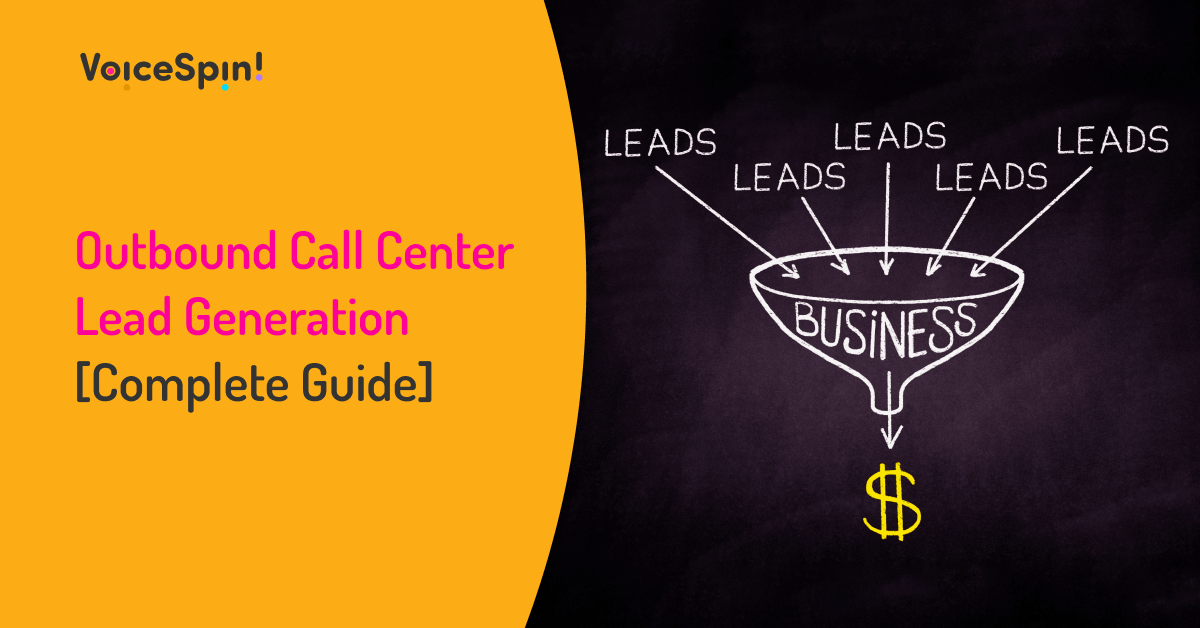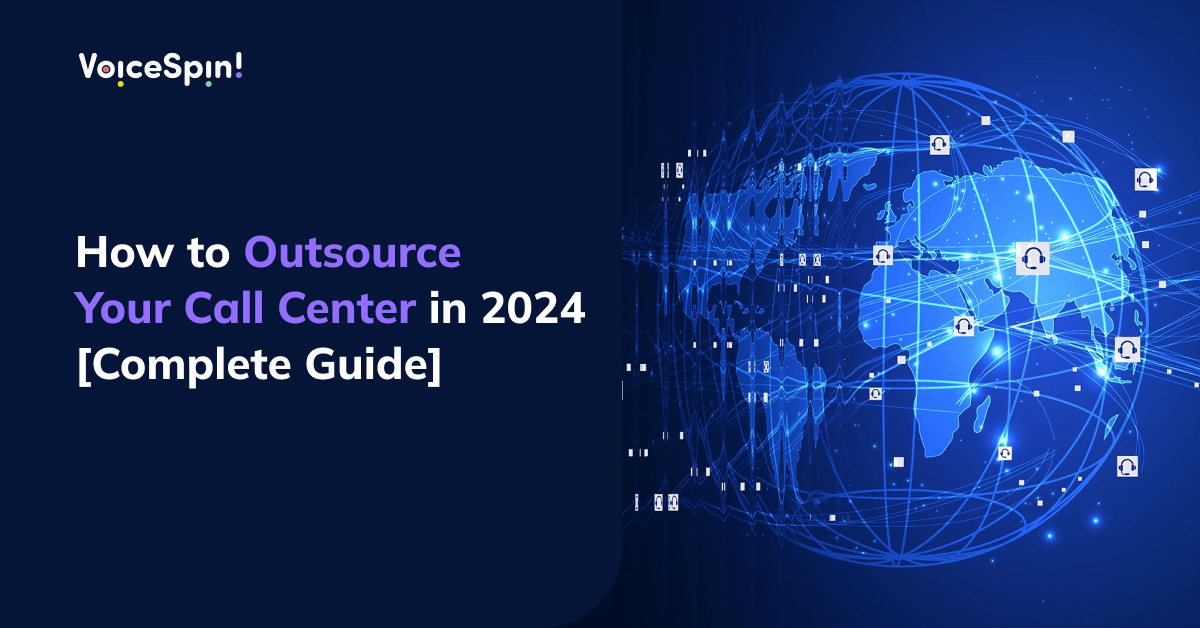Call centers aren’t only about handling inbound inquiries and resolving customer issues. When it comes to outbound call centers in particular, lead generation is one of the most critical part of an outbound call center success.
With the right outbound lead generation strategy in place, you can build brand awareness, expand your customer base, reach new markets, and ultimately increase your sales and drive more revenue for your business.
In this blog, we’ll take a closer look into outbound call center lead generation and explore some of the tried-and-true best practices that you can implement in your outbound call center to achieve unparalleled results in your lead generation efforts.
What is Outbound Call Center Lead Generation?

Lead generation is the process of reaching out to, identifying, and qualifying leads who may be interested in a company’s products or services. In the outbound call center context, lead generation involves making outbound phone calls to lead lists in order to turn those leads into sales opportunities. It is often outsourced to third-party providers offering lead generation call center services.
The ultimate goal of outbound call center lead generation is to generate more qualified leads for a business in a shorter amount of time with fewer resources. Unlike inbound lead generation, which involves attracting and engaging warm leads through marketing channels, outbound lead generation typically means cold calling and interacting with outbound leads that had no prior engagement with a business.
Reaching out to cold leads and establishing rapport, trust, and credibility with prospects while stirring their interest in your offering has always been challenging. That is why many B2B and B2C businesses rely on call center lead generation services.
Is Cold Calling Still Effective for Lead Generation?
Though many would label cold calling as an ‘outdated’ practice, when done properly, it can have outstanding potential in generating high-quality leads and establishing connections with prospective customers. It allows you to reach a larger target audience than you would be able to by using only inbound channels.
In fact, the ‘Top Performance in Sales Prospecting’ research by RAIN Group found that 82% of buyers accept meetings with sellers who proactively reach out. Another research from Crunchbase revealed that organizations that don’t cold call experienced 42% less growth than those who used the tactic.
For businesses in certain industries, such as SaaS, telecommunications, service providers, banking and finance, insurance, travel, real estate, and others, there is no better alternative to cold calling for lead generation.
Top 8 Outbound Call Center Lead Generation Best Practices
Generating leads through outbound calling requires a strategic approach, the right call center technology, and continuous adoption of best practices. Let’s explore some proven strategies and best practices that can turn your outbound call center lead generation into success.
1. Invest in high-quality lead lists
Calling an already qualified lead is an ideal scenario for outbound call center agents, but that is rarely the case in call center lead generation. Very often, agents have to deal with cold leads who most probably know nothing about your products or services. That is why the success of your outbound calling campaigns largely depends on the quality of the lists being called.
Investing in high-quality lead lists is essential to running efficient outbound calling campaigns to generate leads. While purchasing lead lists might be a quick and affordable way to refresh your pipeline, if you end up buying poor-quality, inaccurate, and outdated lists, you aren’t likely to see desirable outcomes. Not to mention the fact that getting data from non-compliant providers might put you at risk of violating compliance regulations.
Apart from purchasing pre-built lead lists, you can also use lead generation software tools like LinkedIn Sales Navigator, Apollo, or Cognism to get well-targeted B2B lead lists or build your own lists by collecting information from various online sources, inbound channels, industry events, etc.
2. Leverage predictive dialer software
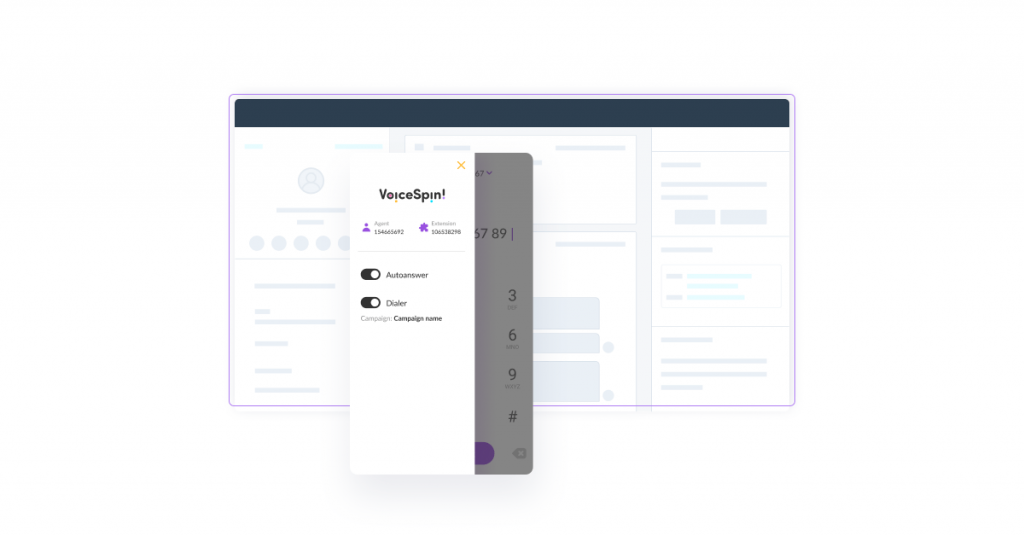
Long gone are the days when call center agents had to dial numbers manually, wasting a great deal of time and effort. With the right dialer software, the entire process of making outbound calls to your prospects can be simplified, automated, and optimized to ensure your sales reps are less involved in non-productive activities and can focus instead on interacting with leads and converting them into sales.
While there are different types of auto dialing modes that can be used in outbound call centers (including power dialing, predictive dialing, preview dialing, and progressive dialing), a predictive dialer is one of the most effective dialing technologies that can take your outbound calling efforts to the next level.
Predictive dialers not only automate the dialing process, they can minimize agent idle time and increase agent talk times by up to 300%, meaning your sales team can connect with more leads in a shorter time and spend more time actually interacting with prospects instead of doing manual tasks.
The predictive mechanism of the dialer uses AI and Machine Learning algorithms to automatically adjust the dialing pace based on real-time data and historical metrics to ensure that once an agent completes their current interaction, there’s always the next call to pick up. That takes your sales team’s productivity to a whole new level, adding to a bigger number of leads generated from each lead generation campaign.
3. Optimize your redialing strategy
What happens when a lead doesn’t pick up? How many times and how often do you redial? Having a smart redialing strategy in place is of huge importance. When call centers buy expensive lists, they would sometimes resort to calling those leads over and over again to justify the expense. But the reality is the more you call someone, the less likely they are to answer the call.
Instead, call centers should take a more strategic approach and dial smarter, not harder. With the right redialing strategy, you can increase your contact rates and generate more sales with fewer leads as well as prevent call blocking and maintain your caller ID reputation.
Here are some quick tips to help you make the redialing process more efficient:
- Redialing Criteria: Determine how many redial attempts you’d like to make based on the call outcome, including all the scenarios like busy signals, unanswered calls, disconnected calls, or reaching a voicemail.
- Redial Frequency: Set a reasonable redial frequency to avoid excessive attempts that could only annoy your leads based on factors like lead value, urgency, and campaign objectives.
- Number Rotation: Limit attempts made per number to avoid the risk of the number being flagged or blocked. Dialing from a different number on each attempt can also increase the answer rates.
- Time-based Redialing: Though studies suggest the best time of day to cold call a prospect is between 4:00 p.m. and 5:00 p.m. their local time, you can still experiment with different redialing times and monitor call answer rates to determine when works best.
- Voicemail Drop: Take into account how many times your redial attempts end with a voicemail drop. At some point, it’s best to stop dialing that prospect.
- Lead Prioritization: Develop a prioritization system to determine which leads should be prioritized for redialing based on lead quality, potential value, stage in the sales cycle, etc. By focusing on the most promising leads, you maximize the impact of your redialing efforts.
- Compliance Management: Ensure your redialing strategy complies with the local regulations (such as calling Do Not Call lists), as failing to comply with them may result in hefty penalties and reputation damage.
- Omnichannel Outreach: If redial attempts are consistently unsuccessful, consider reaching out to leads through alternative channels such as SMS or email. Using omnichannel outreach can increase the chances of engaging with leads who aren’t responding to phone calls.
- Analysis and Optimization: Continuously monitor and analyze the effectiveness of your redialing efforts by tracking Call Answer Rates, Conversion Rates, and other metrics to identify patterns or trends and adjust your redialing strategy accordingly.
- Intelligent Predictive Dialing: Use an intelligent predictive dialing system that supports responsible dialing and can automate and optimize your redialing strategy through machine learning for maximum efficiency.
4. Take advantage of local presence dialing
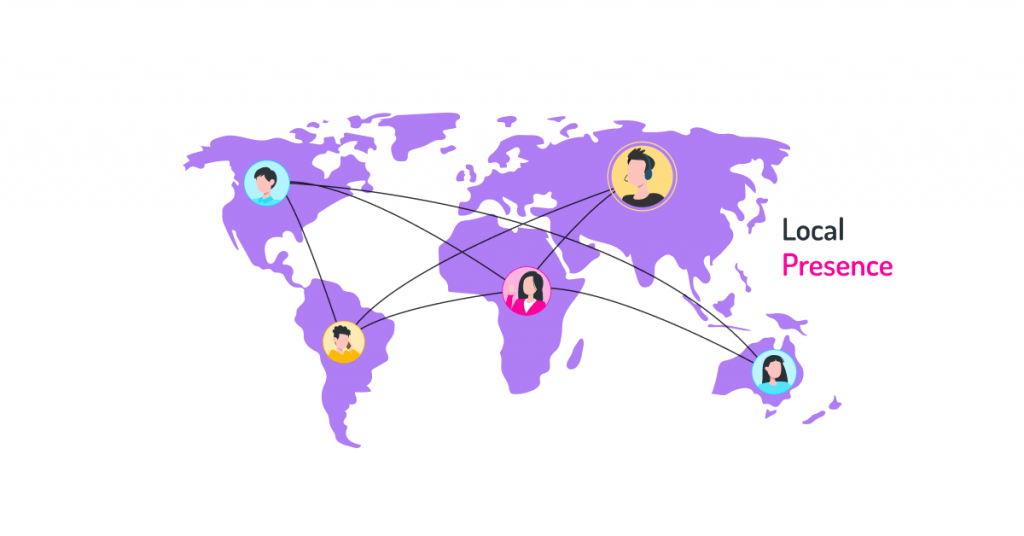
One of the biggest challenges for outbound call centers when running outbound calling campaigns is a low Call Answer Rate because most people aren’t likely to answer calls from unknown numbers. This is where local presence dialing can make all the difference. When a call center uses local presence dialing, prospects will see a number with a local area code on caller ID, which significantly increases the likelihood of the calls being answered.
According to a survey conducted by Software Advice, people are nearly four times more likely to answer calls from local numbers. That said, only 7% of the survey respondents admitted they are likely to answer a call from an unknown caller with a toll-free area code. However, that number goes up to 27.5 percent when the unknown caller is using a local area code.
It makes local presence dialing a clearly effective tactic to use when making outbound cold calls for lead generation, as it increases your chances of getting through to the leads.
To recap, local presence dialing:
- Reduces the number of declined calls
- Increases call pick-up rates by up to 4 times
- Helps build more trust with prospects
- Improves sales team’s productivity
- Boosts the efficiency of cold calling campaigns
5. Use the data collected from call monitoring and speech analytics
Real-time call monitoring and speech analytics are important call center tools that can improve the effectiveness of your call center lead generation campaigns, helping you ensure quality control and compliance. By monitoring outbound calls in real-time, managers can listen in to calls as they are happening to see how agents are interacting with potential leads and identify where they need additional training and coaching.
AI-based solutions, such as speech and voice analytics tools, can automate the entire call monitoring process and provide even deeper insights into call quality, compliance, and agent performance.
Read more about how these tools are used in our related article Speech Analytics in Call Centers: Unlocking the Potential of Voice Data.
In addition, you can leverage sentiment analysis software that uses Machine Learning (ML) and Natural Language Processing (NLP) technologies to evaluate prospects’ emotional tone and attitude and classify interactions as positive, negative, or neutral. This way, managers can spot trends in call sentiment and identify issues they need to address to improve interactions and call outcomes.
To sum it up, real-time call monitoring, AI-powered speech analytics, and sentiment analysis software solutions can help call center managers:
- Monitor call quality and compliance
- Find out if agents adhere to call scripts and if scripts need improvements
- Verify if agents are asking the right lead qualification questions
- Reveal how well agents are able to handle objections
- Identify where agents require more in-depth training
- Understand how sentiment correlates to specific agents, products, campaigns, etc.
6. Develop efficient call scripts
Having the conversation mapped out before you even start dialing your leads is one of the most critical aspects of the cold calling lead generation process. In order to navigate each call with confidence and quickly qualify potential leads, your reps obviously need to have clearly outlined call scripts with an efficient sales pitch and the right set of questions they are going to ask.
Besides, if you segment prospects into different lists or profiles, you should naturally have segmented call scripts that adapt to each profile.
That helps streamline the process, keep agents on track, and ensure consistency in every interaction. It can also reduce the Average Talk Time, as agents will always know the right thing to say at the right time in the course of the conversation.
Below are some tips to pay attention to when cold calling your potential leads:
- Start the call with a personalized greeting and an engaging introduction.
- Clearly state the purpose of the call and the benefits a lead can expect from your product or service.
- Ask more open-ended questions to encourage the lead to engage in the conversation.
- Practice active listening and tailor your pitch based on the lead’s responses.
- Anticipate common objections and prepare responses to address them in a confident and efficient way.
- Avoid sounding overly scripted or robotic and maintain a natural and conversational tone.
- End the call with a clear call-to-action and make it easy for the lead to take the next steps.
- Regularly review and refine your call scripts based on performance data and the results of your campaigns.
On top of that, agents should be empowered and encouraged to adapt and personalize the scripts based on how each conversation goes.
7. Enhance your agent training and coaching

Lead generation in call centers isn’t only about the quality of lead lists, well-written scripts, and the technology you use. It’s about people interacting with people – and the outcome of each cold call will also largely depend on how well your agents are able to communicate with prospects. Which is why investing in agent training and ongoing coaching is just as critical as investing in the right call center technology.
Here are some tips to get your agent training off on the right foot:
- Provide comprehensive product training to ensure agents perfectly understand its features, benefits, advantages over competitive solutions, and value proposition.
- Make sure agents have a good understanding of the industry your product belongs to, the latest trends, potential challenges your leads might be facing, and how your product solves them.
- Focus on essential things like training in effective communication techniques, active listening, asking open-ended questions, building rapport with prospects, handling objections, etc.
- Define clear lead qualification criteria and train your team to assess leads against those criteria. Teach agents to score leads based on various factors like decision-making authority, urgency, and budget, which helps them prioritize their efforts.
8. Measure the right metrics and KPIs
When running outbound calling lead generation campaigns, it’s essential to keep track of the relevant metrics and KPIs (Key Performance Indicators) through real-time and historical reports to have a holistic view of what’s working and what isn’t and how well your campaigns are performing. Based on that data, you can make better-informed decisions and timely adjustments in your calling strategy.
Here are some of the KPIs to pay attention to:
Call Answer Rate (CAR)
Call Answer Rate, also known as Contact Rate, Connect Rate, or Answer Success Rate, measures the percentage of outbound calls that are answered by the leads out of the total number of attempted calls. It helps you evaluate the efficiency of your outbound calling campaigns and the quality of the lead list. Naturally, the higher Call Answer Rate, the better. As mentioned above, one way to improve Call Answer Rate is to enable local presence dialing.
Calls per Agent
This is a straightforward metric that helps you monitor and evaluate agent performance, along with other KPIs. You can increase the number of calls per agent by equipping your team with a professional auto dialing system that optimizes the dialing process for maximum efficiency, allowing agents to make more outbound calls in a shorter time and eliminate the tedious and time-consuming manual dialing.
Dropped Call Rate
In the context of outbound calling, Dropped Call Rate or Call Abandonment Rate shows the percentage of calls that are dropped before a prospect is connected to an agent, which might result in lost leads unless you attempt to redial these leads again. That commonly happens with predictive dialer systems and typically indicates that there may be issues with your dialer settings.
Average Talk Time (ATT)
This metric measures the average time agents spend talking to leads and is closely related to agent productivity. However, it should not be the sole focus, as the quality of the interaction and the achieved outcomes are just as equally important. E.g., when looking at the Average Talk Time on a list during a specific campaign, you’ll also want to look at the Conversion Rate to understand whether having a longer talk time is worth it. Otherwise, you might need to adjust your scripts to reduce the ATT.
Conversion Rate
Conversion Rate shows the percentage of calls that resulted in a desired outcome. It’s one of the key metrics to track when running outbound calling campaigns to evaluate the effectiveness of your lead generation efforts. A low conversion rate may indicate low quality of lists. It also increases your cost per lead, which impacts your call center’s overall revenue.
Cost Per Acquisition (CPA)
Cost per Acquisition measures the average cost incurred to generate one qualified lead through outbound calling efforts. Measuring CPA helps call centers evaluate the efficiency of their outbound call center lead generation campaigns and get clear insights into spending and cost-saving opportunities.
Lead quality metrics
You would also want to keep an eye on the metrics that assess the quality of leads generated through outbound calls, such as lead-to-opportunity ratio, lead scoring, lead qualification rate, and lead progression through the sales pipeline. That will give you a better understanding of what is really going on with your lists.
Take Your Outbound Call Center Lead Generation to the Next Level with VoiceSpin
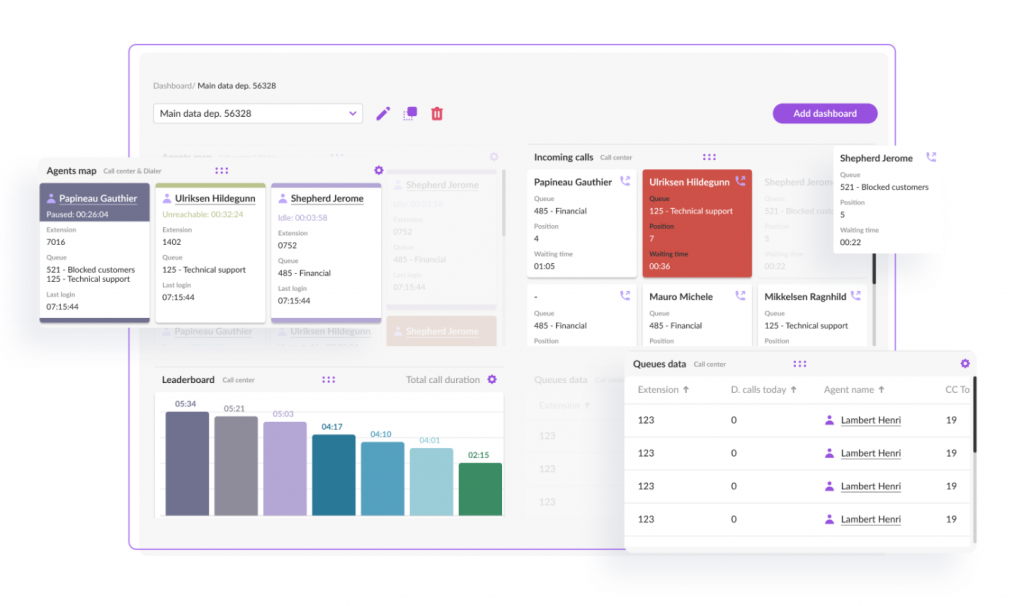
With high-quality lead lists, a well-thought-out dialing strategy, efficient messaging, and the rest of the best practices outlined above, you can ensure the continued success of your call center lead generation efforts and bring more qualified leads into your sales pipeline. That said, the best lead generation call center strategies go hand-in-hand with the right outbound call center technology. And this is where VoiceSpin’s call center solutions fit it.
With VoiceSpin’s AI auto dialer that features predictive dialing, your team can work through lead lists faster and more efficiently without wasting time on manual dialing, voicemails, and unproductive numbers while eliminating idle time between the calls. The dialer’s intelligent dynamic lead/ agent scoring and matching system prioritizes leads and connects them to the best-suited agents, ensuring more conversations with potential leads turn into more deals. Besides that:
- Local presence dialing and dynamic caller ID will dramatically increase your call answer rates.
- Real-time call monitoring and an AI Speech Analyzer will help ensure call quality and compliance and identify agent training needs.
- Advanced analytics and reporting will keep you up-to-date on critical metrics and KPIs to help you make more informed data-driven decisions.
- Seamless integrations with CRM systems and other business tools will keep all your data in sync and easily accessible.
- Omnichannel capabilities will boost your outreach efforts and lead engagement by enabling you to reach out to prospects through automated text messages.
Book a 30-minute demo with our sales team to see how VoiceSpin’s cloud omnichannel contact center solutions cater to your lead generation needs and other business objectives.
